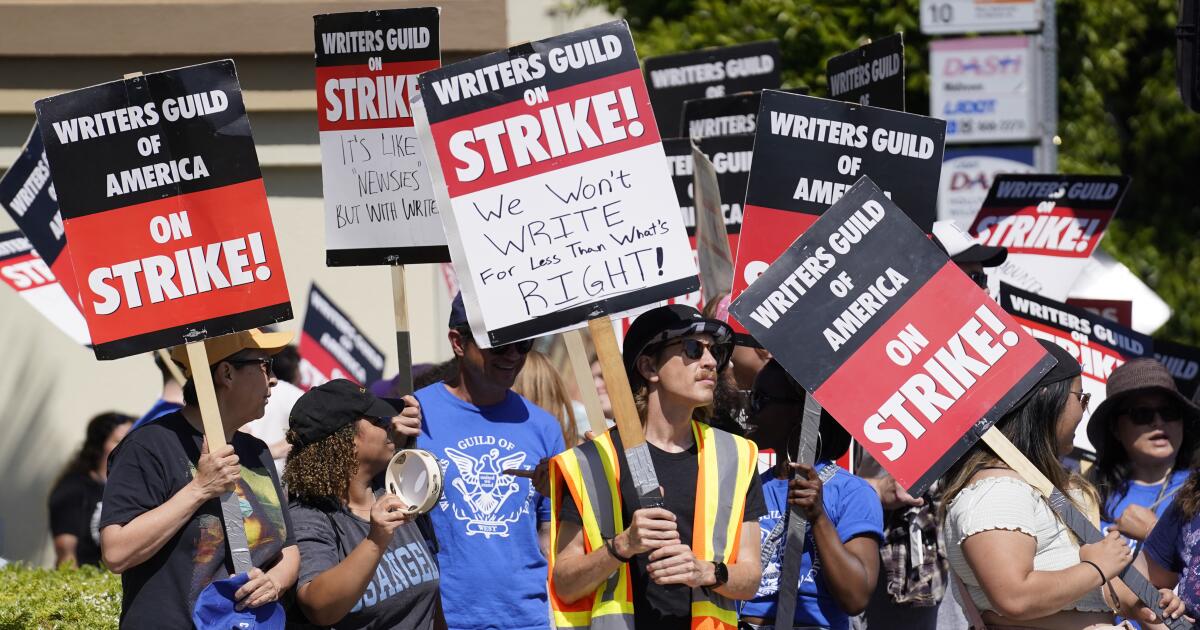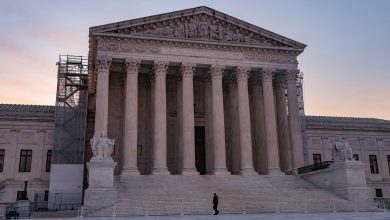California is trying again to extend unemployment benefits to workers on strike

Months after Gov. Gavin Newsom vetoed the proposal, Sacramento lawmakers are again trying to extend unemployment benefits to striking California workers.
Under Senate Bill 1116, introduced by Sen. Anthony Portantino (D-Burbank) and Sen. María Elena Durazo (D-Los Angeles), California workers would be eligible for unemployment benefits after 14 days on strike.
“Nobody goes on strike because they want to go on strike,” Portantino said at a news conference Wednesday announcing the legislation. “People strike as a last resort.”
Portantino and Durazo said the bill is designed to help alleviate the economic consequences of a strike and to help union members resist pressure from their employers to reach a contract agreement more quickly and with conditions. less favorable.
They also argued that extending unemployment benefits to strikers could help reduce the economic consequences of a long-lasting strike, which can bankrupt other local businesses.
When Hollywood writers’ and actors’ unions went on strike last year, the resulting shutdown caused financial hardship for workers and businesses that support film and television sets. television, particularly catering companies, dry cleaners and restaurants.
The strike bill is supported by the California Federation of Labor and other unions. The California Chamber of Commerce and other business groups, including grocery, farm and hospital associations, opposed the bill Wednesday during their first hearings in the state Senate .
California provides up to $450 per week in unemployment benefits, capped at 26 weeks. To qualify, workers must demonstrate that they are unemployed through no fault of their own and are actively seeking employment.
California Chamber of Commerce Rep. Robert Moutrie told a Senate committee Wednesday morning that providing unemployment benefits to striking workers would be a “job killer” that would put the state “one side of labor conflicts.
Striking is a difficult contract negotiation tactic, he said, that is fundamentally different from unemployment.
Newsom vetoed the same bill last year, a rare blow to California’s powerful organized labor movement. In his veto message, Newsom wrote that increasing unemployment benefits would make the unemployment trust fund “vulnerable to insolvency.”
“Now is not the time to increase costs or take on this significant debt,” Newsom wrote.
With California’s governor and lawmakers forced to address a historic budget deficit of at least $37.9 billion this year, convincing Newsom to change his mind will likely prove difficult.
California has borrowed billions of dollars from the federal government to pay for unemployment benefits during the COVID-19 pandemic.
The budget deficit and a relatively high unemployment rate have become major obstacles to reducing the debt, which as of Monday stood at about $20.5 billion.
State Senate analysts estimated last year that providing unemployment benefits to striking workers could cost between “a few million and tens of millions of dollars.”
“The magnitude of the impact is difficult to predict, but ultimately depends on the number of strikes that occur, the duration of the strikes, and the number of employees affected,” the analysts write.
The Bureau of Labor Statistics tracks strikes of more than 1,000 people and has reported at least 56 such stoppages in California between 2012 and 2022, analysts say. There were two strikes during this period which lasted two weeks. Both were in 2022.
And in 2023, the Writers Guild of America was on strike for 148 days and the Screen Actors Guild for 118 days.
Lorena Gonzalez, president of the California Federation of Labor, said she thought the legislature’s analysis fell “far short” of the actual cost to the unemployment trust.
She called for a full accounting of how much California would have paid in unemployment benefits to striking workers in 2023.
Providing unemployment benefits to strikers would help support the local economy, Durazo said, which may face “a vicious downward cycle.”
California Daily Newspapers





